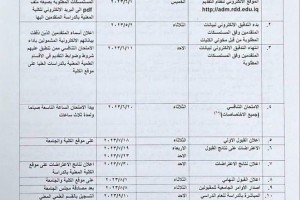
A master's thesis discussed in the Ecology Department at the College of Science at Basrah University entitled (Isolation and Identification of Biosurfactants Producing Bacteria and their Application in the bioreactor to treat Petroleum Hydrocarbons Contaminated Water) by student Farah Dhiyea Bader and the number of Chapters was four.
The biological treatment of contaminated water in bioreactors show a decrease in the total alkane concentration after 14 days, from (200.44) to (0.94) mg /L in the bacterium bioreactor, from (286.101) to (36.26) mg /L in biosurfactants bioreactor.
The results of aromatic compounds in the bacterium bioreactor, showed the highest (100%) degradation of Phenanthrene, Fluoranthene, Pyrene, Benzo (a) pyrene and (90.79%) of 2-methyl naphthalene and (85%) for each of Naphthalene and Acenaphthlene, and the percentage of (79.72%) for 1-methyl naphthalene and (77.50%) to Acenaphthene. While the lowest degradation ratios were (58.52%, 45.08%, 33.98% and 18.05%) for compounds (Fluorene, Benzo (k) fluoranthene, Anthracene, Benzo (b) fluoranthene) respectively.
In the biosurfactant treated bioreactor, the highest degradation rates (83.71%, 82.04% and 72.42%) (Naphthalene, 2-methyl naphthalene and 1-methyl naphthalene) respectively, while the lowest (68.75%, 60.90% and 46.05%). In addition, 45.04% for (Acenaphthlene, Acenaphthene, Fluorene, and Phenanthrene) compounds respectively.







